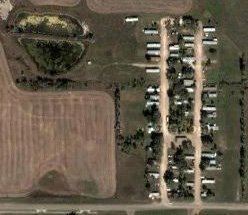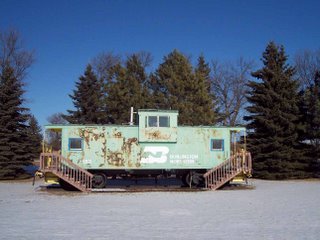About time I got around to posting about this... I have made wine. Yes,
beet wine!
This is my first time making wine; but now is the time to try my hand at making it. I always wanted to do this. My neighbors and I back in Montana have talked about making chokecherry wine, but never found the time to do so. My good NoDak friend, Rod, learned how to make wine this fall. He got the idea after visiting a winery during the 2005 edition of the CANDISC bicycle ride around N. Dakota. He has made successful batches of apple, plum, and chokecherry wines, among others.
Well, what do
I have to make wine from? I hardly had any of my apples left. I didn't pick any chokecherries this year. My garden beets did really well this year and I ended up with more beets than even
I cared to eat. Lo and behold I found a few recipes online on how to make beet wine. Well, why not?
You may remember my earlier post about my schleping lots of garden stuff on the train from MT to ND? Beets! Lots of beets. Now you know why I brought them with me!
Rod, and most recipes, said the fermentation process during wine making takes 6 to 8 weeks. Therefore the first thing I did after getting here was to cut up and cook the beets and then start the fermenting process. Rod and I did this in his kitchen before Christmas. Being guys we were a little messy - and beet juice
is messy - so the kitchen got a little 'red'.

Rod's wife, when she saw the kitchen, bit her tongue. Rod and I applied some elbow grease and cleaned up all of our mess once we were done, and I think (hope) all was forgiven.

The cooked beets were placed in Rod's 6 gallon pail, along with 9 pounds of sugar and enough water to fill the pail to the 5 gallon level. Campden tablets and a few other chemicals were also added. Then I took it all home. The pail of beets had a strong aroma!

24 hours later it was time to start the fermenting process. I started the yeast and then added it to the beet mixture. The next morning, re-reading the notes, I read that one should pour the yeast on top of the beet mixture. Do
not stir and mix the yeast into the beets. Oopps.

Maybe that is why the yeast mixture seemed lackluster.
Rod gave me another batch of yeast which I carefully poured on top of the beet mixture. This time the yeast took off. Now in addition to the smell of beets (yum?) the fermenting process was starting to give off an alcoholic smell. Hmm.. must be working!
After about a week it was time to remove the cooked beets from the mixture. By now there wasn't much left to be extracted from the beets themselves. Still I squeezed and squeezed and squeeeezed... the mesh bag of beets to get
all the beet juice I could. A little more beet flavor can't hurt, can it? By the time I finished the squeezing, my hands were
red, red, red! It took a long time and a lot of scrubbing to get back signs of my normal color.
Then Rod and I transferred the mixture from the 6 gallon pail into one of his carboys. Carboys look like one of those jugs of water on top of the old style water coolers. In fact these jugs can be used as carboys. I think that is where Rod got his carboys. (That's also the reason for the duct tape!)
Now to wait. This is where the 6 to 8 weeks comes in. I watched the bubbles rise through the liquid to the top of the bottle. Quickly rising. Many, many bubbles. All streaming upwards along the carboy's slope to its neck, which was sealed by an airlock. The airlock releases air from the bottle and does not not let it get inside. The next day the water in the airlock now had a pinkish/reddish hue.
My beets fermented really fast! After 7 to 10 days the hydrometer check showed the yeast had already converted all the sugar to alcohol. So much for weeks and weeks of fermentation! Now was the time to stop the fermentation process. By now I already had my first cataract surgery and had blurry vision. So I took everything back to Rod's house to have him help me with these steps. I also returned his two boxes of empty wine bottles - now clean and label free.
After adding potassium sorbate to kill the yeast, we let the beet mixture sit 24 hours to fully stabilize. Then Rod re-racked the mixture into another carboy before he added the clearing (fining) agents that encourage any pulp to fall to the bottom of the carboy. I left the mixture at Rod's house for him to do this for me. I was about to have my second cataract operation in a few days.
While I was at Rod's house I helped him bottle one of the two wines he was in the process of making: strawberry/kiwi. Rod had bought a nice corker that easily and quickly put corks into the wine bottles we filled, and the two of us made short work of bottling his wine.
Now to wait again. After about 10 days, on a weekend, we got together again to check my wine. After moving the mixture from one carboy to another we found plenty of sediment left behind. We sampled the beet wine. Strong and with an earthy aftertaste. Well, I did see some sediment move though the siphoning tube along with the liquid. Rod commented that this siphoning took longer than usual for him as the liquid mixture was thicker than his previous wines. Hmmmm... I had time before returning to Montana so we added another round of fining agents and let the mixture sit another week for more settling.
This time the earthy aftertaste wasn't as noticeable. Success!

And I was pleased with the wine's color. The color you can see in the photos below.
Rod has experimented during his wine making on sometimes adding sugar water to sweeten the wine a little before bottling it. He had done this with his strawberry/kiwi wine before we bottled it. I am not sure which way my bottled beet wine will go: will it stay the same, sweeten, or become more acidic? Since my wine was near my tolerance for acidity in a wine, and the wine had a good body to tolerate sweetening, I decided we should add some sugar water to sweeten it a little. That way, if the bottled wine does turn more acidic over time, it will still be drinkable.
More sugar water sweetened the wine up some. I didn't have much room to work with now. Any more sugar water and the mixture could quickly become too sweet. And in case the wine sweetened with age, I didn't want it to get too sweet. I'd say "and fruity" but these are beets we are talking about after all, not fruit.
While the earthy aftertaste was now gone (or masked), the wine is after all made from beets. Think and you shall notice. Shhh!!

My beet wine has body and still does taste of beets even through all that alcohol. But it's wine.
Enough tinkering. Enough sampling. Time to bottle! Besides Rod was also working on a batch of concord grape wine and peach(?) wine. Between sampling all our experiments with these wines, and the cheese and crackers, it was time to bottle my wine before our stomachs

and taste buds

gave out, or the effects of the wine made us too careless. Oopps... a little spilled on the carpet. Where is Rod's carpet cleaner machine? Got to clean it before his wife finds out! Beside being very noticeable,
beet red is not a good carpet color!
We bottled 29 bottles. Actually closer to 26 bottles as 6 bottles were half sized bottles. Those bottles are for friends who want to try my wine. A little is probably all they could handle.

I gave Rod 6 full bottles in exchange for all his help. I offered more but that was all he wanted. Based on its strong flavor, he felt it would take me years to drink all my wine. Possibly...
Then Rod and I got to work on designing a label for my wine. We came up with what I think is a nice label, and one representative for me.
Tall Pines Winery presents "bietola rossa". We used babblefish to find a neat sounding name for my wine. "Bietola rossa" is Italian for red beet. Appropriate, eh?
At the local Gourmet Chef store I bought a re-sealer to use on opened wine bottles. I figured with my wine I wouldn't drink the whole bottle at one time! Turns out I was right!
I have had a few bottles of my wine since we bottled them all. I was pleasantly surprised that after a few weeks, and chilled in a refrigerator, the wine tastes better than when it was originally bottled. It's aging well? It also helps to drink the wine with a meal, and not sipping and re-sipping it warm before bottling it. Still, it takes me several meals to drink one bottle. Partly because of the strong flavor, and partly because after a glass and a half I can feel the alcohol's effect on me. And I don't presently have a pretty girlfriend to, ahem, enjoy the wine's effects with when I get silly.

Here's to my wine improving with age! And to me making more wine this year! (Anybody got any empty wine bottles they don't need?)



Flashlight behind the bottle


Against light


In sunlight

Look at the color of the wine.


 This trailer park was my world growing up. ...yes, I am trailer trash!
This trailer park was my world growing up. ...yes, I am trailer trash!















































